Hongyi Ding
RakutenAI-7B: Extending Large Language Models for Japanese
Mar 21, 2024
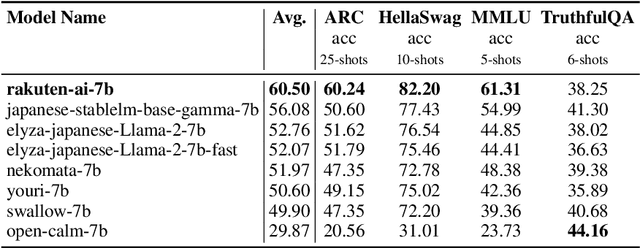

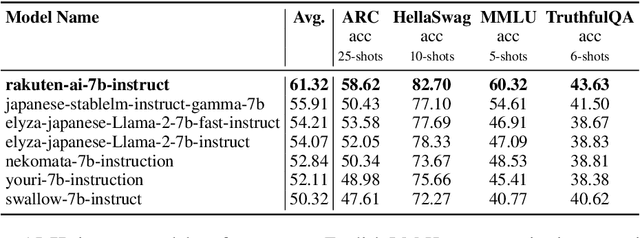
Abstract:We introduce RakutenAI-7B, a suite of Japanese-oriented large language models that achieve the best performance on the Japanese LM Harness benchmarks among the open 7B models. Along with the foundation model, we release instruction- and chat-tuned models, RakutenAI-7B-instruct and RakutenAI-7B-chat respectively, under the Apache 2.0 license.
Bayesian Nonparametric Poisson-Process Allocation for Time-Sequence Modeling
Apr 03, 2018



Abstract:Analyzing the underlying structure of multiple time-sequences provides insights into the understanding of social networks and human activities. In this work, we present the \emph{Bayesian nonparametric Poisson process allocation} (BaNPPA), a latent-function model for time-sequences, which automatically infers the number of latent functions. We model the intensity of each sequence as an infinite mixture of latent functions, each of which is obtained using a function drawn from a Gaussian process. We show that a technical challenge for the inference of such mixture models is the unidentifiability of the weights of the latent functions. We propose to cope with the issue by regulating the volume of each latent function within a variational inference algorithm. Our algorithm is computationally efficient and scales well to large data sets. We demonstrate the usefulness of our proposed model through experiments on both synthetic and real-world data sets.
On the Ambiguity of Registration Uncertainty
Mar 20, 2018



Abstract:Estimating the uncertainty in image registration is an area of current research that is aimed at providing information that will enable surgeons to assess the operative risk based on registered image data and the estimated registration uncertainty. If they receive inaccurately calculated registration uncertainty and misplace confidence in the alignment solutions, severe consequences may result. For probabilistic image registration (PIR), most research quantifies the registration uncertainty using summary statistics of the transformation distributions. In this paper, we study a rarely examined topic: whether those summary statistics of the transformation distribution truly represent the registration uncertainty. Using concrete examples, we show that there are two types of uncertainties: the transformation uncertainty, Ut, and label uncertainty Ul. Ut indicates the doubt concerning transformation parameters and can be estimated by conventional uncertainty measures, while Ul is strongly linked to the goal of registration. Further, we show that using Ut to quantify Ul is inappropriate and can be misleading. In addition, we present some potentially critical findings regarding PIR.
A Feature-Driven Active Framework for Ultrasound-Based Brain Shift Compensation
Mar 20, 2018

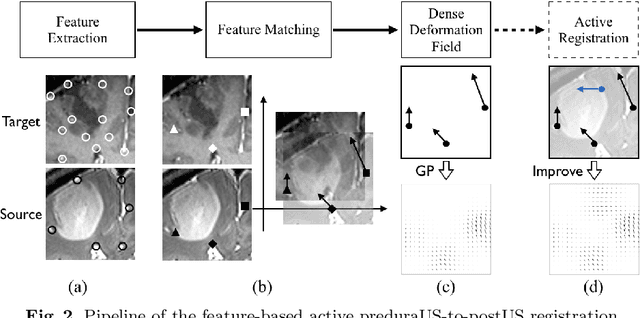
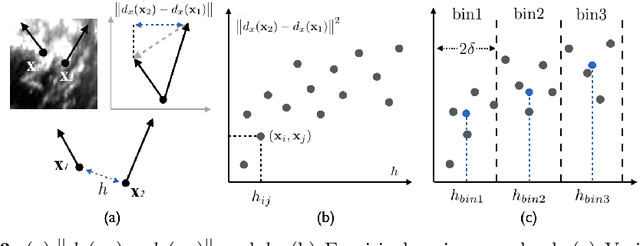
Abstract:A reliable Ultrasound (US)-to-US registration method to compensate for brain shift would substantially improve Image-Guided Neurological Surgery. Developing such a registration method is very challenging, due to factors such as missing correspondence in images, the complexity of brain pathology and the demand for fast computation. We propose a novel feature-driven active framework. Here, landmarks and their displacement are first estimated from a pair of US images using corresponding local image features. Subsequently, a Gaussian Process (GP) model is used to interpolate a dense deformation field from the sparse landmarks. Kernels of the GP are estimated by using variograms and a discrete grid search method. If necessary, the user can actively add new landmarks based on the image context and visualization of the uncertainty measure provided by the GP to further improve the result. We retrospectively demonstrate our registration framework as a robust and accurate brain shift compensation solution on clinical data acquired during neurosurgery.
Variational Inference for Gaussian Process with Panel Count Data
Mar 12, 2018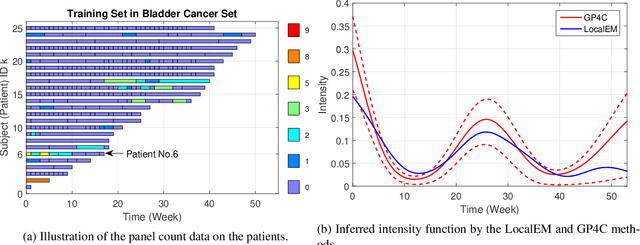
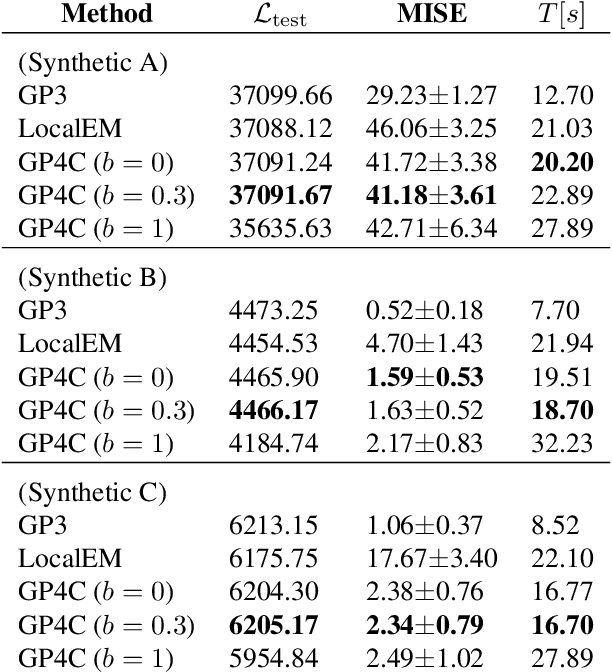
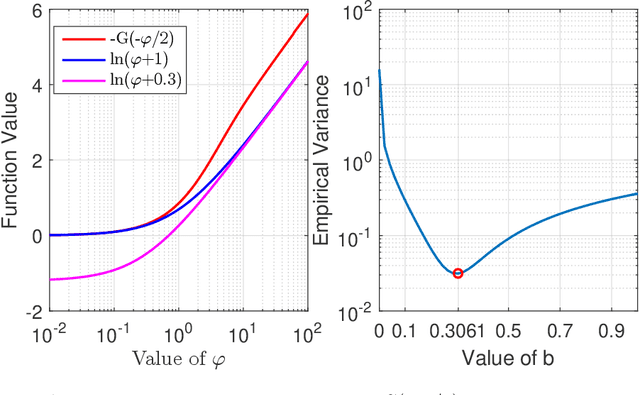
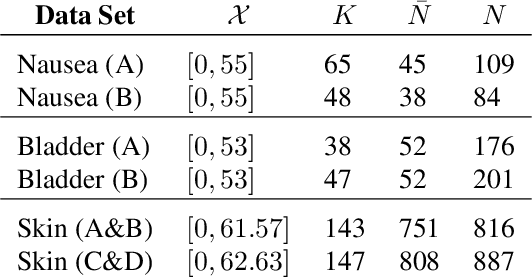
Abstract:We present the first framework for Gaussian-process-modulated Poisson processes when the temporal data appear in the form of panel counts. Panel count data frequently arise when experimental subjects are observed only at discrete time points and only the numbers of occurrences of the events between subsequent observation times are available. The exact occurrence timestamps of the events are unknown. The method of conducting the efficient variational inference is presented, based on the assumption of a Gaussian-process-modulated intensity function. We derive a tractable lower bound to alleviate the problems of the intractable evidence lower bound inherent in the variational inference framework. Our algorithm outperforms classical methods on both synthetic and three real panel count sets.
Misdirected Registration Uncertainty
May 17, 2017



Abstract:Being a task of establishing spatial correspondences, medical image registration is often formalized as finding the optimal transformation that best aligns two images. Since the transformation is such an essential component of registration, most existing researches conventionally quantify the registration uncertainty, which is the confidence in the estimated spatial correspondences, by the transformation uncertainty. In this paper, we give concrete examples and reveal that using the transformation uncertainty to quantify the registration uncertainty is inappropriate and sometimes misleading. Based on this finding, we also raise attention to an important yet subtle aspect of probabilistic image registration, that is whether it is reasonable to determine the correspondence of a registered voxel solely by the mode of its transformation distribution.
Reinterpreting the Transformation Posterior in Probabilistic Image Registration
Apr 07, 2016



Abstract:Probabilistic image registration methods estimate the posterior distribution of transformation. The conventional way of interpreting the transformation posterior is to use the mode as the most likely transformation and assign its corresponding intensity to the registered voxel. Meanwhile, summary statistics of the posterior are employed to evaluate the registration uncertainty, that is the trustworthiness of the registered image. Despite the wide acceptance, this convention has never been justified. In this paper, based on illustrative examples, we question the correctness and usefulness of conventional methods. In order to faithfully translate the transformation posterior, we propose to encode the variability of values into a novel data type called ensemble fields. Ensemble fields can serve as a complement to the registered image and a foundation for developing advanced methods to characterize the uncertainty in registration-based tasks. We demonstrate the potential of ensemble fields by pilot examples
 Add to Chrome
Add to Chrome Add to Firefox
Add to Firefox Add to Edge
Add to Edge